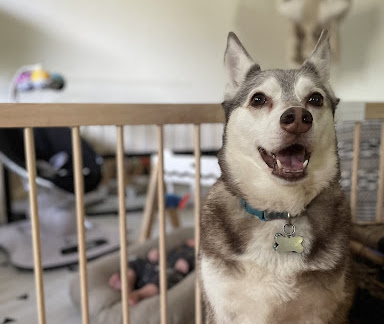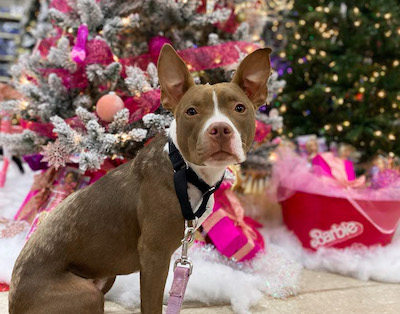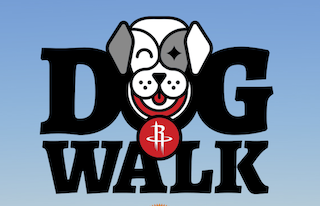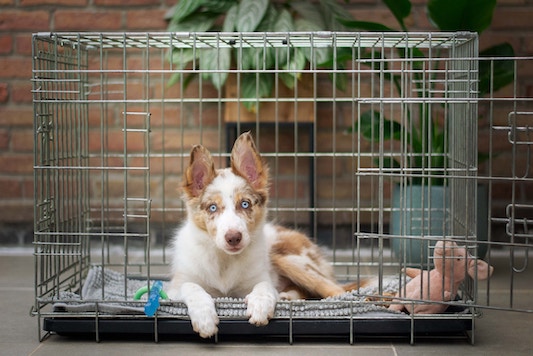Welcoming a new baby is an exciting and nervous time. Your lifestyle and routine are likely to drastically change, at least in the beginning, which means it’s likely to change for your pets too. On top of preparing for your new addition, a million questions about your dog may begin to run through your head. How is my dog going to handle the crying? Will they like the baby? How am I going to walk them now? Are they going to feel like I replaced them? The good thing is you likely have around 9 to 10 months to prepare your dog, and even better news, you’ve already got a head start by reading this blog today.
Before baby’s arrival
Introducing baby noises, gear, and equipment
Before your baby makes their grand appearance, you are likely already stocking up on all of the essentials and big-ticket items such as strollers, cribs, and car seats. Once you get a new item such as a stroller, it is best to introduce those items early on so that your dog is used to seeing them around. Walking around the living room with a car seat in hand or taking your dog for a walk next to the stroller can be a great way for them to get a feel for what it’s going to be like when the baby is here. If your dog seems anxious about any of the items such as walking next to the stroller, try using two people to start and have one person pushing the stroller as another person walks the dog and feeds them treats and praises as they walk next to it. This classical conditioning training method, which we call pairing will help develop a positive association(treats) with a potentially aversive item(stroller), to help make that item less aversive over time. You can also use pairing to work on any nervousness when hearing the sound of a baby crying/cooing. Pull up a YouTube video of a baby crying, and if your dog exhibits any nervous behavior, deliver a treat. If you have a more anxious pup, you may need to feed treats at a higher rate at first and use something super tasty such as turkey or cheese to start.
Relevant obedience commands
If you haven’t already, begin working on relevant obedience commands and manners that will be helpful prior to the baby’s arrival. Obedience and manners we love for this scenario are auto-sit, play biting, chewing, and counter surfing exercises, wait, down, place, leave it, leash walking, and come.
Baby and dog gear we love
We all know how little babies are when they first enter the world, and for that reason, it’s even more important that we have both baby and dog gear that will set you up for success before your baby comes home.
For the baby
Baby gate – There are so many styles and sizes out there for everyone. Be sure to consider how tall the baby gate is depending on your dog’s height and ability to jump. We also recommend a baby gate that attaches to the wall and is securely screwed in place, versus one that can be “easily” taken off or knocked down for safety reasons.
Play Pen or Pack-n-Play – Having an additional safe space for your baby in your main living space will make not only nap or play time easier, it will also add an additional layer of security where your baby can relax out of reach of your dog.
Baby monitor – Whether you are looking for a system with all the bells and whistles or a simple camera setup, a baby monitor facing each of your main sleep and play spaces can help provide some additional peace of mind if you need to step out of the room. Even with the camera setup though, be sure your baby is out of reach of your dog when going out of sight.
For the dog
Leash – a 6ft flat leash is great to have to maintain control when first introducing your baby to the home.
Collar – a tightly fitted collar that cannot slip over the ears/head. We like a buckle collar or martingale.
Dog Bed – perfect to provide your dog with a safe and comfy space that is separate from the baby’s Boppy pillow or loungers
Exercise Pen – This is great for quick separation of space when needed. Take note that, unlike a baby gate, these are not secure to the wall, so for that reason, we do not recommend leaving your dog in or behind it without supervision.
Hard Toys – Introducing hard toys such as antlers, kongs, and cow bones will help your dog distinguish between your baby’s toys and theirs. Stuffed animals and rope toys can be confusing for some dogs, especially puppies, and create problem behavior with chewing baby toys.
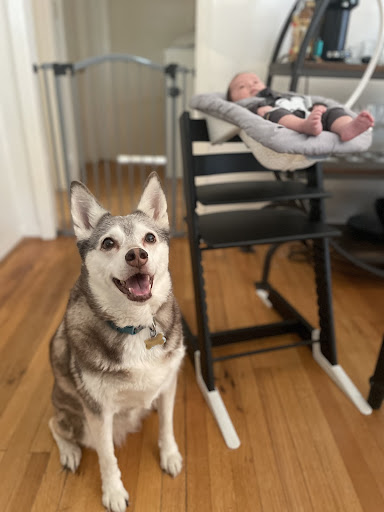
After baby’s arrival
Now that everything is set up and your sweet baby is here, let’s walk through how to put all that prep work into action. The biggest thing to remember here is even the most friendly of dogs can accidentally injure a new baby, and for that reason especially in the beginning while you are learning how your dog will respond to this change, we recommend being more conservative.
Safety and management strategies
- Before you walk in the door, have your dog on a fitted collar and leash.
- Don’t allow your dog to be in your baby’s face. Keep at least 3-5ft of distance and sit in between your baby and your dog. There is no need to let your dog “smell” your baby as according to the AKC “the smelling section of a dog brain is 40 times larger than ours. In fact, one-eighth of a dog’s brain is dedicated to interpreting odor.” This means it’s highly likely your dog smells your baby easily from the moment you walk in the door.
- Don’t allow your dog to jump on the couch. Or if your dog is allowed on furniture, they should be calm, and you should sit in between them and the baby, with the baby’s head facing away from the dog out of reach.
- Utilize baby gates, exercises pens and bassinet/cribs if you are not actively watching or engaging with them.
- Keep the baby out of your dog’s space while they are eating.
Obedience
We’ve put together a few examples of obedience and manners that are commonly used when introducing a baby and dog to the same living space.
- Auto-sit – When meeting the baby for the first time as it is incompatible with jumping, and to earn physical attention instead of play biting.
- Wait – At the threshold of the kitchen and doors, or if you spilled something accidentally.
- Down – Near the dinner or changing table, or really anywhere where you are working with the baby and need to create some distance between you and your dog.
- Place – Great for dinner time, when you are practicing tummy time, or just like down, anytime you need to create a little distance.
- Leave it – Comes in handy for those unpredictable moments when something falls on the ground such as baby food or a pacifier. You can also use leave it to ask your dog to walk away from an item such as a baby swing.
- Come – Overall helpful for safety reasons and to call your dog back to you away from the baby or spilled items.
- Leash walking – If you plan for your baby to join you on your walks, getting your dog used to walking next to the stroller without pulling early will make walks more pleasurable.
Praise, petting, and treats in the presence of your baby will help to keep obedience and the overall addition of their new human sibling a positive experience for your dog! If you would like help working with your dog on their manners and obedience preparation prior to the baby’s arrival, or if you are concerned about any problem behaviors around your baby before or after arrival, contact us today!
